
Growing Strawberries (in real life)
Rendered: 2022-08-20

Rendered: 2022-08-20
Strawberries can make a wonderful addition to a plant collection. Viable strawberry seeds can be found at a grocery store right on the strawberry product. Whether the seeds on a store-bought strawberry are viable depends on the source. If the strawberry product has been imported from another country, chances are that the package has been subjected to sterilizing radiation as per compliance with import regulations. Therefore, the best bet is with locally grown strawberries.
To germinate, the skin of a strawberry is excised, placed on soil, and lightly covered with dirt. Any deeper and the tiny seeds may struggle to reach the surface. Expose the growing medium to sunlight to prevent mold from developing on the decomposing strawberry skin. If mold develops, it generally does not impact the development of seeds. A minimum of two weeks is required for seedlings to sprout. But in many cases, seedlings require a third week to a whole month. With this method, seedlings will appear in clusters.
Strawberry seedlings sprout with two embryonic leaves (cotyledons). The cotyledons of healthy strawberry seedlings are round, circular or thumb-shaped. If the seeds germinated in common outdoor soil, it may be easy to mistake a young weed for a young strawberry, vice versa. Strawberry seedlings are shorter and stumpier than chickweed. The green color of a strawberry cotyledon is more yellow than blue unlike the teal-colored spurges (euphorbiaceae). The species of a specimen can be certain once the third leaf develops. A strawberry seedling’s third leaf will have jagged edges, roughly in the shape of a bear’s paw.
If the strawberry skin has been planted on the surface, it is not uncommon to find the leaves clasped in the seed jacket, or to find the seed jacket cling to the edge of a cotyledon. The seed jacket is generally of no consequence and will come off on its own.
If the strawberry skin has been planted relatively deep into the soil, the seedlings will often have a longer stem than the ones that germinated on the surface. The leaves may be yellow and deformed as a symptom of light starvation, but this is recoverable.
Like most plants, strawberry seedlings are sensitive to changes in soil conditions such as pH. Seedlings should not receive fertilizers nor should they be transplanted. If they absolutely must be, soil should be transferred with as little disturbance to the root as possible.
Do not get discouraged if some seedlings wither shortly after birth. One strawberry skin carries many seeds1. The survival rates of seedlings can vary depending on its heritage. Descendants of a strawberry plant that has survived in (mostly) natural conditions are generally better survivors than those raised in controlled or sterile conditions such as a hydroponic farm.
A newly emerged seedling sprouts single leaves with jabbed edges. Later, seedlings develop a crown, a main body of the plant from which leaves, roots, and flowers emerge. Subsequent leaves from a crown have three leaflets (trifoliolate). A strawberry crown naturally sits above the soil, and a healthy specimen has a green crown. Stressed or sick specimens have browning crowns.
Strawberry crowns can also migrate to a limited extent. In this case, the thin stem from which a seedling emerged can extend to push the crown a short distance away. This can be observed in strawberries born in clusters.
Based on soil conditions, strawberry plants may propagate by developing clone plants, most noticeably with stolons (also known as runners). A strawberry stolon is a stalk of which the ends are not only leaves, but the crown of a clone plant. The quantity and length of stalks varies. In nutrient-rich soil, the quantity of stolons increases but the length of the stalks decrease. In nutrient poor soil, the length of a stolon increases as the quantity of stolons decrease.2 Stolons can be pruned so the resources of a strawberry plant are dedicated to its own growth instead of the daughter plant. In doing so, the yield and quality of strawberry fruit improves.
After one year, strawberry plants flower. The petals are white colored. In the absence of pollinators or intervention, strawberry plants self-pollinate. After the petals shed, the reptacle swells and becomes a strawberry (fruit). It often goes without having to be said: the results of sexual reproduction, the offspring, the seeds from a strawberry plant, are genetically different from their parents. Thus, the fruit of a offspring plant may deviate as well.
Seedlings — just don’t. If it is possible to scoop up the soil with little disturbance to the root then depending on skill, a successful transplant may be possible.
Grown plants — place the crown above soil. Crowns beneath moist soil risk crown rot and other infections.
A plant that has been raised indoors and later moved outdoors may change in coloration from bright green to dark green (with hardier leaves) with red leaf stems.
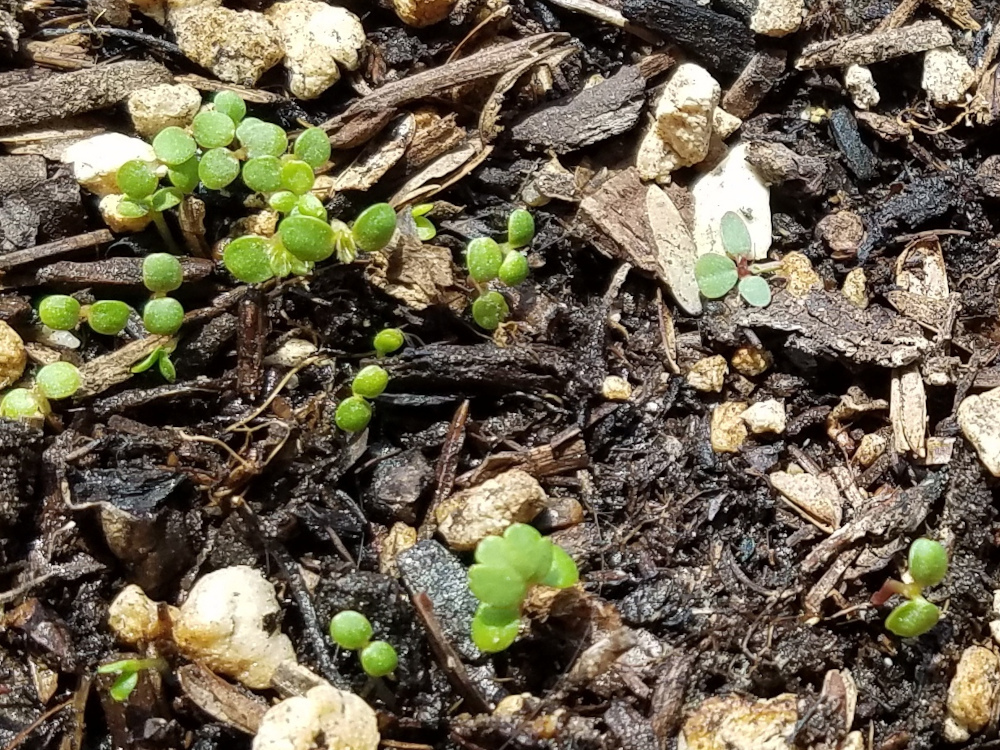
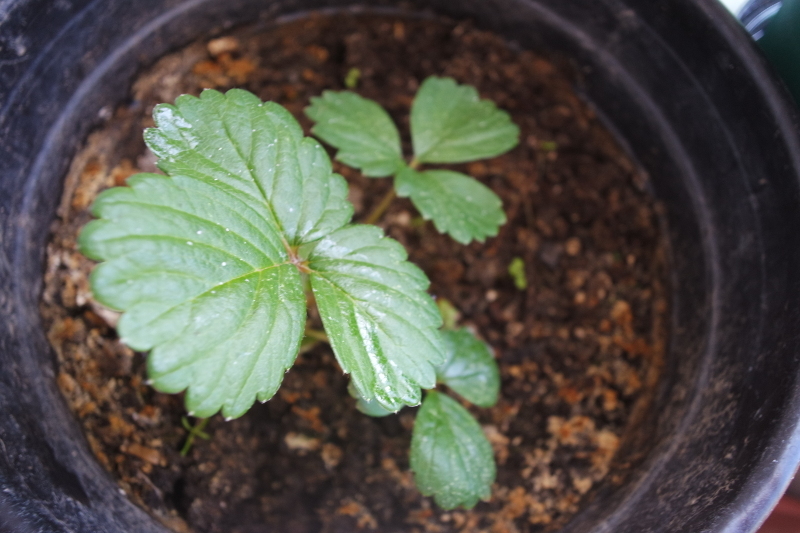
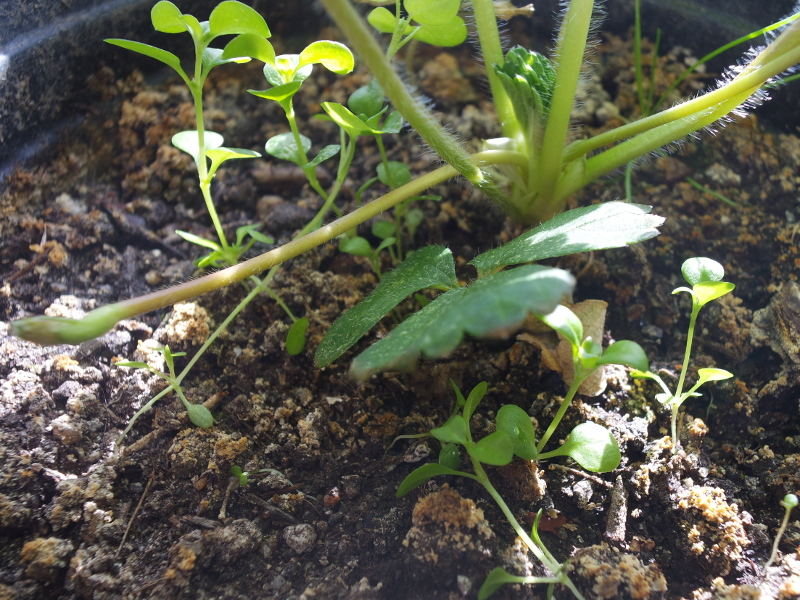
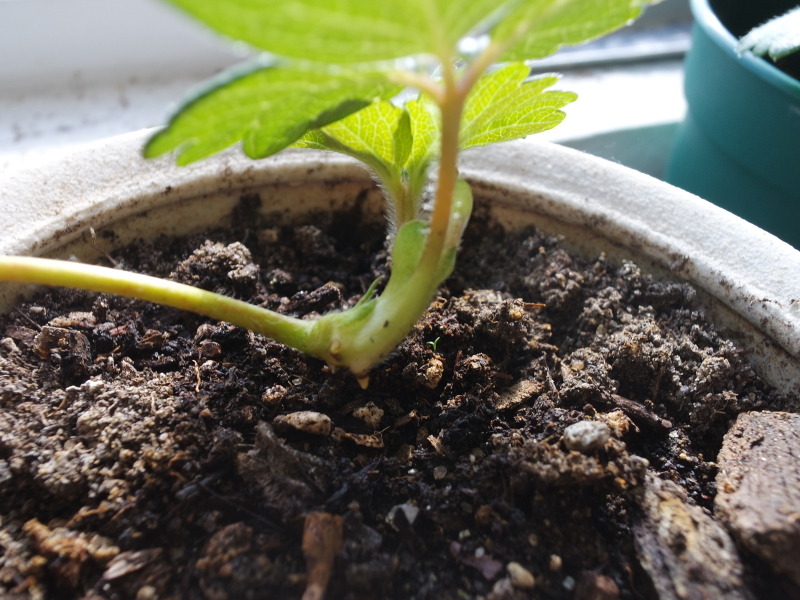
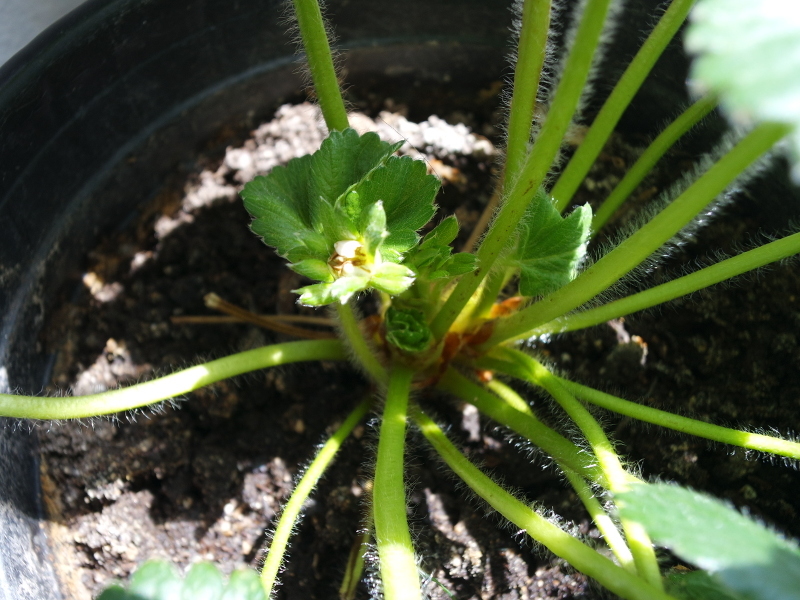
The “seeds” on the outside of the strawberry are technically tiny, hard fruits (achenes) each containing one seed. The fruit is the reptacle.↩︎
The effect of nitrogen on stolon and ramet growth in four genotypes of Fragaria chichiloensis L. (USDA)↩︎